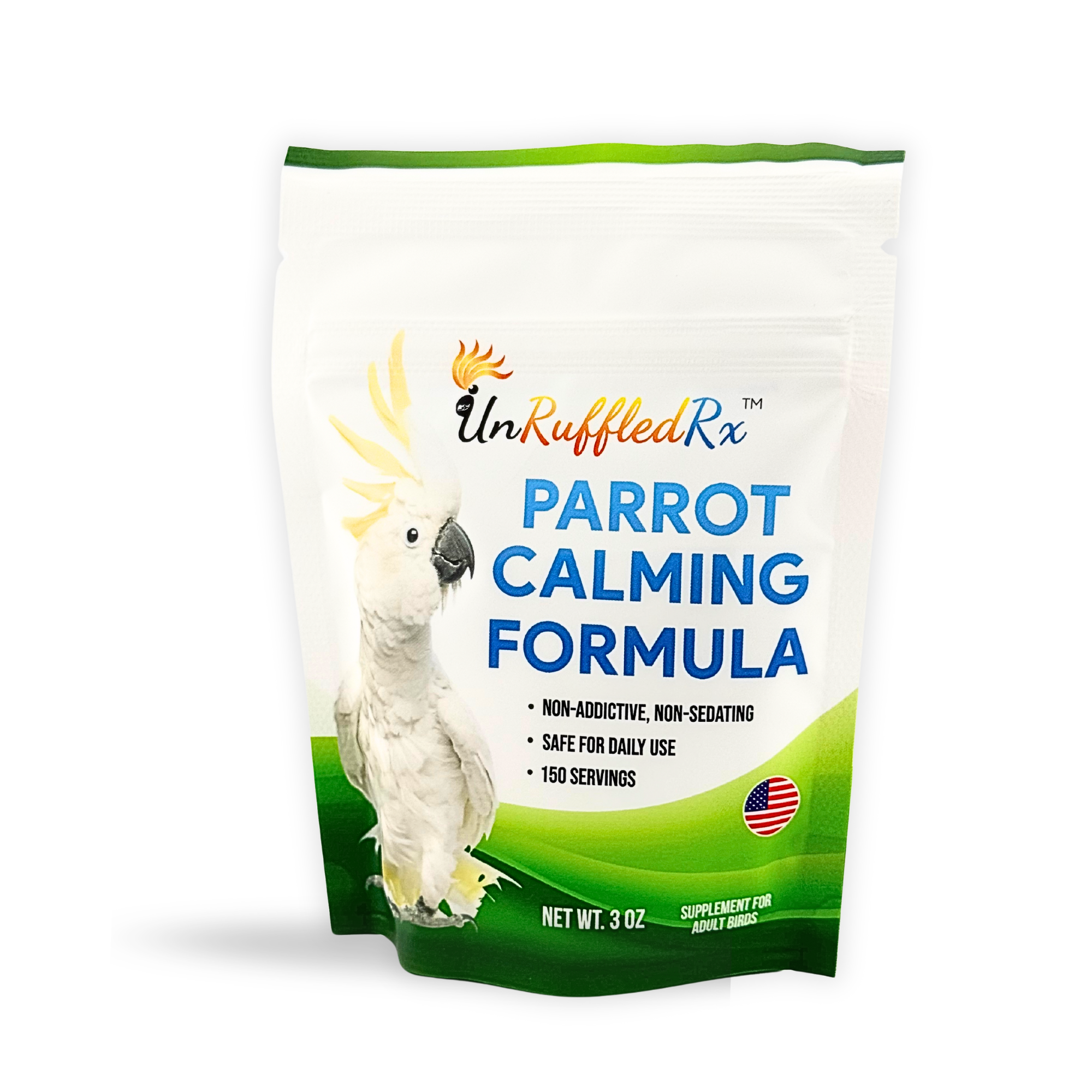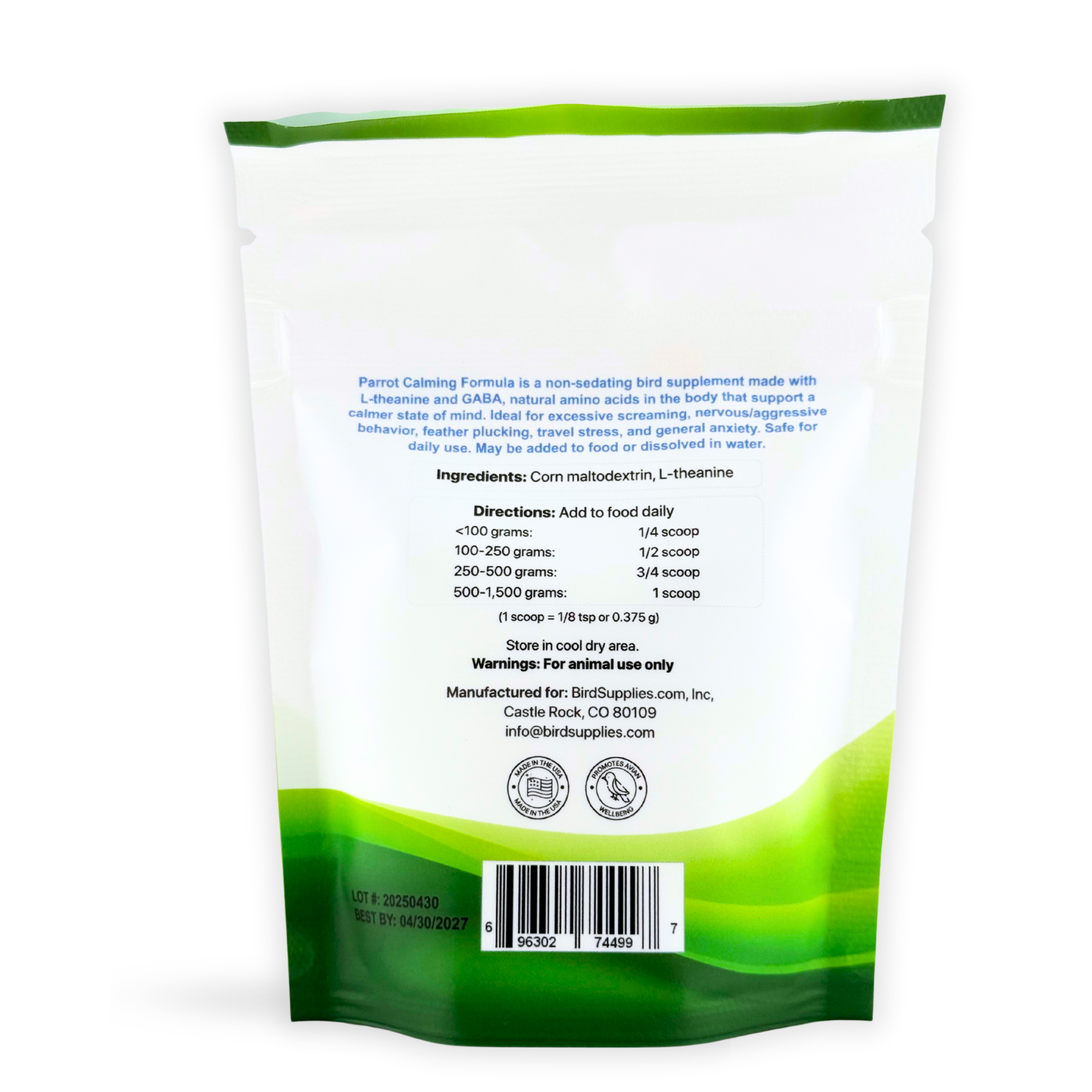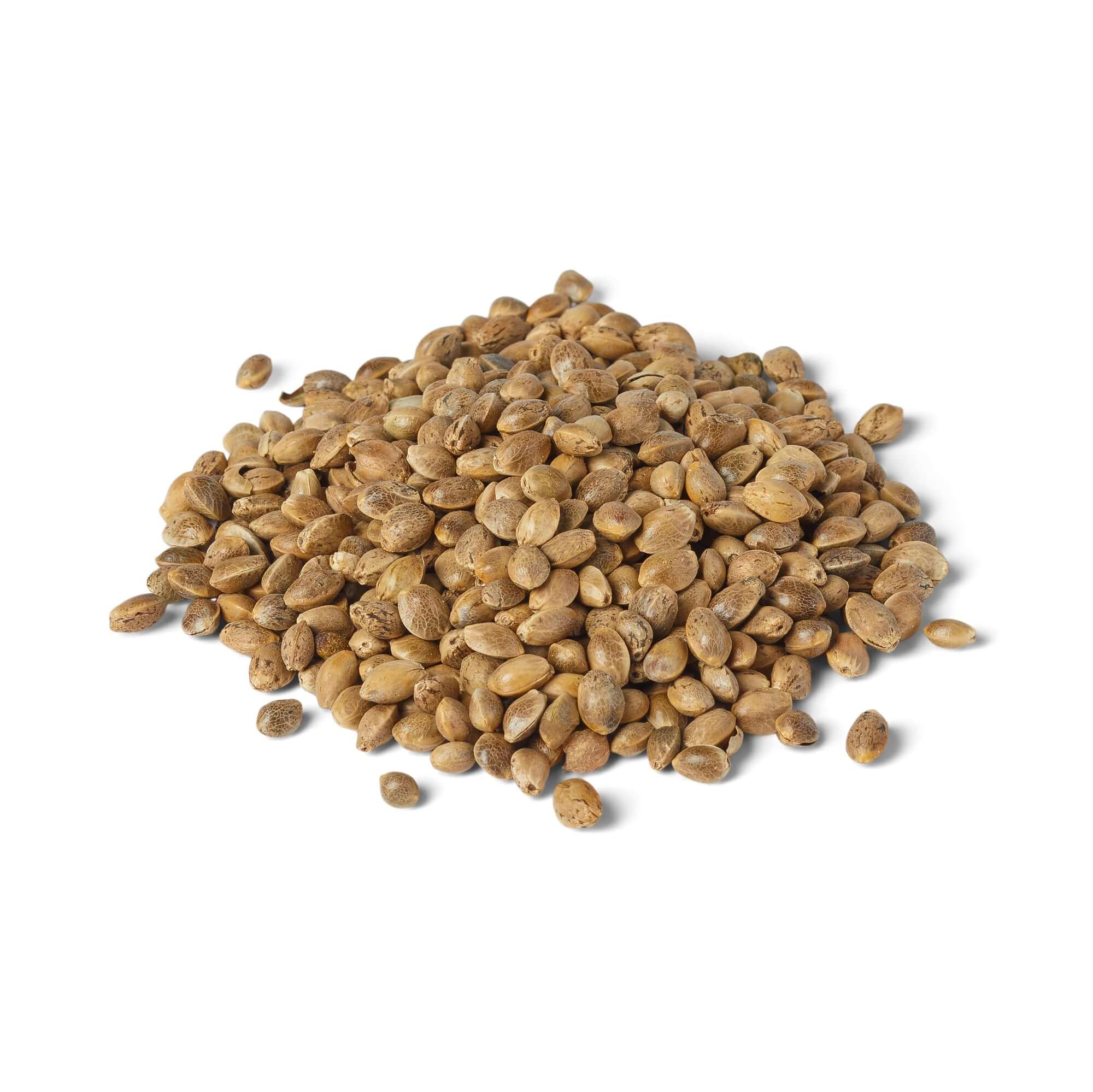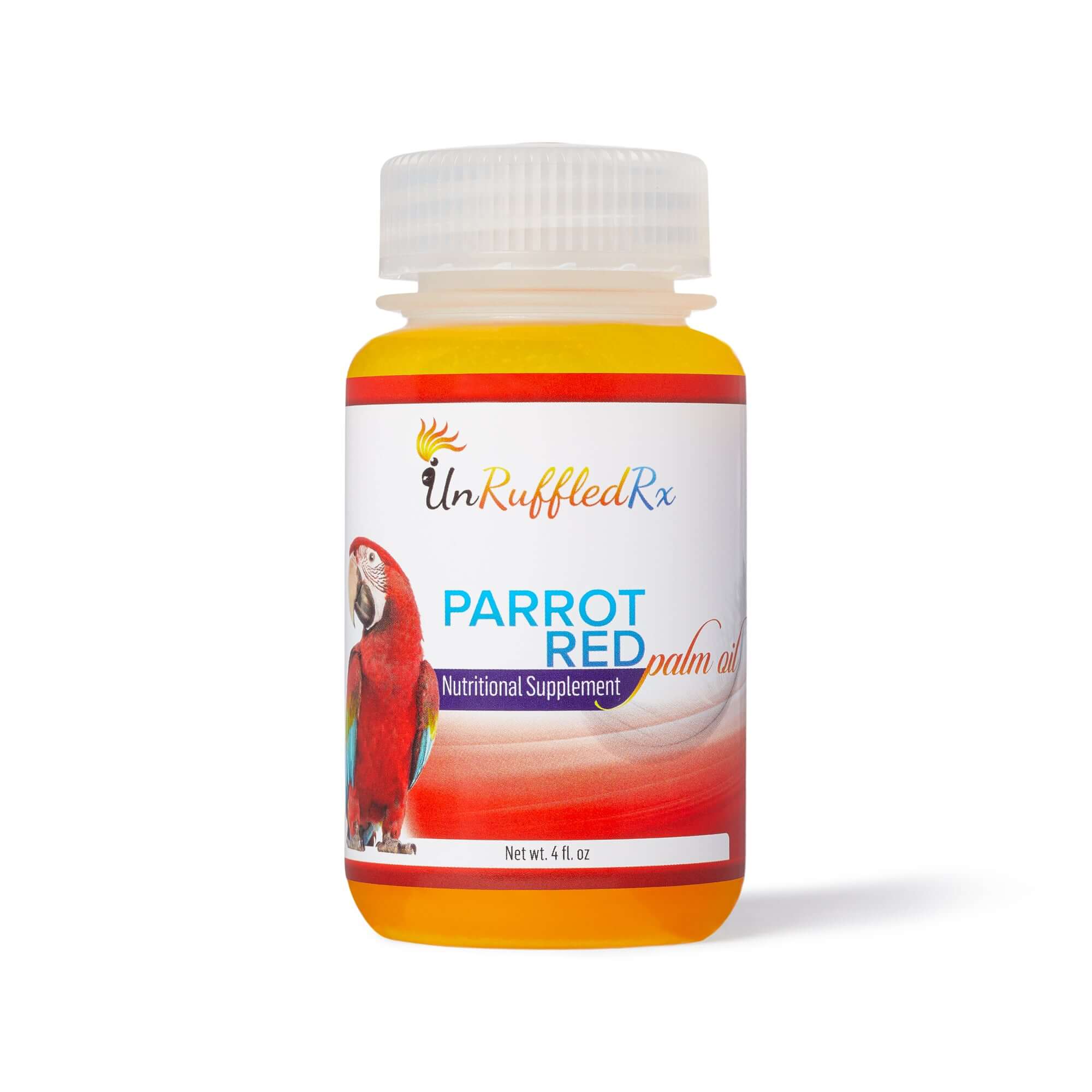- What Is Molting in Parakeets?
- When Do Parakeets Molt?
- Signs Your Parakeet Is Molting
- Is It Molting or Something Else?
- French Molt in Budgies: What You Need to Know
- Nutrition Tips to Support a Healthy Molt
- Comfort Tips for Molting Budgies
- How to Build a Molting Care Routine
- Final Thoughts + When to Call a Vet
Molting in parakeets can be a little shocking if you’ve never seen it before. One day your budgie looks perfect, and the next—poof!—feathers everywhere, a cranky bird, and little spiky pins sticking out of their head. Is this normal? Is your bird okay?
In this blog, we’ll walk you through exactly what molting is, how to tell if it’s healthy or not, and what to do if something seems off—like a condition called French molt. You’ll learn easy tips to keep your parakeet comfortable, well-fed, and feeling their best while new feathers grow in. We’ll also share a few must-have products that can make molting easier on both of you.
What Is Molting in Parakeets?
A natural process all budgies go through
Molting in parakeets is a natural part of bird life. It’s how your budgie gets rid of old, worn-out feathers and grows in fresh, healthy ones. Think of it like swapping out an old winter coat for a brand-new one!
Even though it might look messy—and your bird might act a little cranky—it’s completely normal. Parakeets molt many times over their life, especially when seasons change. As long as your bird is eating, active, and doesn’t have bald spots, it’s usually nothing to worry about.
Why molting happens
Feathers don’t last forever. Over time, they get damaged from flying, climbing, preening, or rubbing on toys and cage bars. Molting gives your parakeet a fresh set of feathers to help with flying, insulation, and looking sharp.
This process is driven by hormones and can be triggered by changes in daylight, temperature, or your bird’s natural cycle. Some molts are quick and light, while others may seem like a feather explosion. Either way, it’s a healthy reset for your bird’s body.
Types of molts: juvenile vs seasonal
Young parakeets go through a special molt called the juvenile molt. This happens around 3 to 6 months of age when they shed their soft baby feathers and grow in their first set of adult ones. It’s usually lighter than later molts and helps mark your bird’s growing-up phase.
After that, most budgies go through seasonal molts once or twice a year—usually in the spring and fall. These are the bigger molts where you’ll see more feathers dropping and new “pin feathers” sprouting in. Each molt can last a few weeks, and no two are ever exactly the same.
When Do Parakeets Molt?
Typical molt seasons and timing
Most parakeets molt in the spring and fall. These seasons signal changes in daylight and temperature, which naturally trigger the molt cycle. You may not notice a strict schedule, but many birds follow this seasonal rhythm year after year.
A normal molt can last anywhere from 2 to 6 weeks. Some birds go through a light molt that barely shows, while others seem to drop feathers left and right. As long as your budgie seems healthy and new feathers are growing in, it's a sign their body is doing what it should.
How environment affects molt timing
Indoor birds don’t always molt like their wild cousins. That’s because lights, temperature, and even air conditioning can confuse your bird’s natural rhythm. If your home stays the same year-round, your parakeet might molt off-season or more randomly.
Things like stress, diet, or major life changes (like moving or new pets) can also trigger a molt. Some birds even do what’s called a "soft molt," where they lose just a few feathers at a time instead of going through a big shed. Every bird is different, so it helps to learn your budgie’s patterns.
What to expect during the juvenile molt
The juvenile molt is your parakeet’s first big feather change. It usually kicks in around 3 to 6 months of age. You’ll start to notice little baby feathers on the floor and new “pin feathers” poking through, especially on the head and neck.
This molt is lighter than adult molts but still important. It helps your young budgie grow stronger, more adult-like feathers and can even bring out brighter colors. If your bird seems itchy or more tired than usual, don’t worry—it’s just part of growing up!
Signs Your Parakeet Is Molting
Common signs of a healthy molt
One of the first signs your parakeet is molting is—you guessed it—feathers on the floor! You might notice little downy feathers and a few larger ones collecting at the bottom of the cage. Don’t panic—that’s totally normal.
As new feathers grow in, you’ll also spot “pin feathers,” which look like tiny blue-gray spikes, mostly on the head and neck. These are just new feathers wrapped in a waxy coating. With gentle preening (or help from a buddy bird), those pins will open up into soft, new plumage.
Behavior changes during molt
Molting can make your budgie feel a bit “off.” Some birds get quieter or less playful. Others might act more grumpy or avoid being handled for a few days. After all, growing new feathers can be hard on the body.
It’s also common for birds to scratch or rub their heads and bodies more than usual. That’s because growing new feathers can be itchy! A warm mist bath or aloe spray can help soothe the skin and ease discomfort during this phase.
What’s normal vs what’s concerning
It’s normal to see scattered feathers, some crankiness, and pin feathers coming in. But if your parakeet has bald patches, is plucking out feathers, or seems weak or sick, it might not be a regular molt. Those are signs you should take a closer look—or call an avian vet.
Also watch for red, swollen skin or any bleeding. A healthy molt never causes open wounds or patchy, irritated areas. When in doubt, it’s always better to get expert advice—especially if your bird seems uncomfortable or stops eating.
Is It Molting or Something Else?
When feather loss isn’t just a molt
Sometimes what looks like molting in parakeets might actually be something else. If the feather loss is too heavy, uneven, or leaves bald patches, it may not be part of the normal cycle. Your bird could be dealing with stress, illness, or a skin issue instead.
Healthy molting is gradual and usually doesn’t leave bare skin exposed. If your budgie looks scruffy all over but still has fluffy down underneath, that’s probably normal. But if you see red skin or missing feathers in just one spot, that’s a sign to dig deeper.
How to tell the difference between plucking, mites, or illness
Feather plucking is when your bird pulls out its own feathers, often from stress, boredom, or discomfort. These birds usually target their chest, shoulders, or legs—and the feathers don’t grow back easily unless the cause is fixed. You might even catch your budgie in the act.
Mites or skin infections usually cause more scratching, red patches, or even scabbing. Illness, especially liver or thyroid problems, can lead to poor feather quality or weird molting patterns. If your budgie’s feather loss looks painful or keeps getting worse, don’t wait—talk to a vet.
Red flags to watch for
Feather loss that happens fast or leaves bald spots is a red flag. So are signs like bleeding, scabs, changes in droppings, weight loss, or a bird that suddenly stops playing or eating. Those aren’t signs of a normal molt—they’re signs your bird needs help.
Trust your gut. If something seems off, it’s better to check with an avian vet than to just guess and worry. An early vet visit could catch a bigger problem before it gets worse—and help your budgie feel better faster.
French Molt in Budgies: What You Need to Know
What is French molt?
French molt is a condition that mostly affects young budgies and causes abnormal feather loss—especially flight and tail feathers. Unlike a normal molt, birds with French molt may lose large feathers suddenly or fail to grow them back at all. These birds often can’t fly, or they flutter to the ground instead of gliding.
You might notice your baby budgie looks healthy but has short or missing wings and a bare-looking tail. Sometimes the feathers grow in broken or twisted. French molt is different from regular molting and may last much longer—or even be permanent.
What causes French molt?
French molt is believed to be linked to a virus called Avian Polyomavirus, which is especially harmful to young birds. It spreads easily in crowded breeding conditions and can pass from parents to chicks. Some birds recover over time, but others are affected for life.
Poor early nutrition, stress, or genetics may also play a role. It’s hard to predict which birds will be affected, and there’s no simple test or cure. But if you have a young budgie showing these signs, it’s worth asking your avian vet for guidance.
How to care for a bird with French molt
Budgies with French molt can still live long, happy lives—they just need a little extra help. Make sure your bird’s perches low in the cage in case they fall off. Offer at least one soft perch and easy access to food and water. If your bird is prone to falling off the perch, cover the cage floor with a soft towel. Flying may be difficult or impossible, so remove high perches and keep the environment safe.
Boosting your bird’s nutrition is key to supporting their skin and feather health. Supplements like FeatherUp! or the UnRuffledRxSkin & Feather Kit can give your bird the nutrients it needs for stronger feather growth and better comfort. And don’t forget emotional support—these birds thrive with attention, gentle play, and lots of love.
Nutrition Tips to Support a Healthy Molt
Why molting parakeets need more nutrients
Molting takes a lot of energy! Your budgie’s body is working overtime to grow hundreds of new feathers, which are made almost entirely of protein. That means your bird needs more nutrition than usual to stay healthy and strong during this time.
If your bird is on a seed-only diet, it is not getting enough of the vitamins and minerals needed for feather growth so it will become weak and sickly over time. Without proper support, feathers can come in thin, dull, or brittle. A boost in nutrition such as feedinga pellet diet and offering fruits and vegetables can make a big difference in how your bird looks and feels.
Key vitamins and minerals for feather regrowth
During a molt, your parakeet especially needs nutrients like:
- biotin
- amino acids
- omega-3’s
- vitamin A
These nutrients help support skin health, reduce itchiness, and fuel feather production from the inside out. Think of them as the building blocks for strong, shiny plumage.
Calcium, zinc, and B-complex vitamins also play a big role in overall energy and tissue repair. A diet rich in leafy greens, veggies, and high-quality pellets is a great foundation—but during a molt, most birds need more than food alone can offer.
FeatherUp and Skin & Feather Kit: How they help
FeatherUp is a vet-trusted, biotin-rich supplement made just for birds going through a molt. It supports strong feather regrowth, healthy skin, and balanced energy—all in one easy-to-serve formula. It’s especially helpful for birds on seed-heavy diets or birds recovering from stress molts.
Want full support? Our Skin & Feather Kit combines FeatherUp with bird calming formula and moisturizing care like Aloe Vera Spray and Red Palm Oil. It’s the go-to bundle for itchy, molting birds who need help inside and out. You can learn more and grab yours with the button above 👆
Comfort Tips for Molting Budgies
Helping your bird feel better during a molt
Molting can make your budgie feel tired, itchy, and a little grumpy. Their skin might be more sensitive, and those new pin feathers can feel like tiny pokes. It’s totally normal—but you can help make the process more comfortable with a few simple changes.
Give your bird plenty of quiet time and let them rest. Skip intense training or handling for now, and keep your routine gentle and predictable. A calm, low-stress environment helps your budgie focus on healing and growing those new feathers.
Baths, perches, and stress relief
Molting birds often love a good mist bath or a shallow bowl of warm water. It helps soften pin feathers and soothes itchy skin. You can also use a bird-safe aloe spray to help moisturize their skin and calm any irritation. Never pull pin feathers out with tweezers. First, it hurts like hell and second, it will just trigger a new feather to grow in depleting the bird of nutrients.
Offer a mix of soft and rough perches so your budgie can choose what feels best. Rope, natural wood, and even padded perches are great options. Avoid rearranging the cage too much—familiar surroundings help reduce stress during this sensitive time.

Safe toys and cage setup during molt
Keep toys simple and soft during a molt. Avoid anything with sharp edges or rough textures that could irritate new feathers or sensitive skin. Foraging toys and gentle shredders are great for distraction without overdoing it.
During a molt, your budgie might rub its head on a perch to help break the sheath off new pin feathers—especially the ones they can’t reach on their own. Offering a mix of soft and rough perches gives your bird options to gently work those feathers free. Just try not to rearrange the cage too much—familiar surroundings help reduce stress while your bird’s body focuses on growing fresh feathers.
How to Build a Molting Care Routine
Keep it simple and soothing
Molting doesn’t have to be stressful—for you or your budgie. A basic care routine can help your bird feel more comfortable while giving their body the nutrients it needs to grow beautiful new feathers. Here’s what that can look like day-to-day:
✔️ Morning: Offer a quick mist bath or use a gentle aloe spray to calm itchy skin
✔️ Feeding time: Sprinkle FeatherUp over chop or soft food twice a day for feather support
✔️ Weekly: Add a small dab of Red Palm Oil to provide healthy fats for skin and feather growth
When to start and how long to keep it up
Begin this routine as soon as you see signs of molting—like extra feathers around the cage or pin feathers popping up. Most molts last 4 to 6 weeks, so stick with the routine until your bird is fully feathered again.
This simple plan supports your bird from the inside out and helps make molting a lot easier to manage. Bonus? You’ll both feel more confident next time it rolls around.
Final Thoughts + When to Call a Vet
Trust your instincts
As a bird lover, you know your parakeet better than anyone. If something feels off—like feather loss that looks painful, behavior that seems really out of the ordinary, or a molt that’s dragging on too long—it’s okay to trust your gut. You’re not overreacting by asking questions or getting help.
Most molts are totally normal, but it never hurts to double-check. A quick call to an avian vet can give you peace of mind and help rule out anything serious. Better safe than sorry, especially when it comes to your feathered friend’s health.
When to get professional help
Call a vet if your bird shows bald patches, bleeding, scabs, or signs of illness like puffing up, not eating, or acting unusually tired. These aren’t signs of a healthy molt and might point to infection, mites, or another underlying problem.
Also reach out if the molt seems nonstop or your budgie doesn’t seem to bounce back. Long-term feather loss or repeated molting could signal a deeper health issue, and a good vet can help you get answers fast.
How to support your parakeet year-round
Molting is just one part of your bird’s wellness journey. The best thing you can do year-round is provide a balanced diet, enriching toys, good sleep, and regular checkups with an avian vet. These habits make a big difference in feather quality and overall health.
And remember—you’re doing great. By learning about molting and supporting your bird through it, you’re giving them exactly what they need to thrive. Here’s to a happy, healthy, fully fluffed budgie!
In conclusion...
Knowing that your bird needs better feather support, more nutrients, and a little comfort during a molt is one thing—but actually making those changes can feel overwhelming. Don’t worry, you’re not alone. I’ve helped thousands of bird lovers just like you create simple routines that really work.
Molting can be tough on your bird, but with the right care, it doesn’t have to be. That’s why I created FeatherUp and the Skin & Feather Kit—to make it easier to support your budgie from the inside out. Birds are my passion, and my mission is to help them live their best, fluffiest life possible.
Related Posts:
The Ultimate Guide to Molting in Parrots
Molting Cockatiel? Easy Ways to Keep Them Comfortable
References:
Groom, J. V., II, & Williams, D. L. (2015). Feather loss and feather damaging behavior in psittacine birds: A review of anatomy, causes, and treatment. Journal of Exotic Pet Medicine, 24(3), 210–220. https://doi.org/10.1053/j.jepm.2015.06.002
Jayson, S. L., Bennett, R. A., & Ballard, B. (2022). Behavioral and environmental management of common feather disorders in companion birds. Veterinary Clinics: Exotic Animal Practice, 25(1), 1–16. https://doi.org/10.1016/j.cvex.2021.10.001
Speer, B. L. (2016). Current veterinary therapy in exotic pet practice. Elsevier Health Sciences.
Link to this blog
Burroughs, D. (2025, May 19). Help! My parakeet is molting—Now what? BirdSupplies.com. https://birdsupplies.com/blogs/news/146105479-what-you-should-know-about-molting-parrots?pb=0
Diane Burroughs, LCSW, brings over 30 years of experience helping bird lovers build stronger, healthier bonds with their parrots. With a foundation in psychotherapy and Applied Behavior Analysis (ABA), Diane combines proven behavioral science with simple, real-life strategies anyone can use. Through her books, behavior consultations, and UnRuffledRx parrot wellness products, she’s dedicated to helping real bird owners create trust, confidence, and a lifetime of positive experiences with their feathered companions.
Diane's products been featured in the Journal of Avian Medicine and Surgery and at ExoticsCon, a national conference for exotic animal veterinarians. Her bird collars and supplements are trusted by avian vets and stocked in vet clinics across the U.S. With thousands of individualized behavior plans under her belt, Diane’s mission is simple: to help parrots and their people thrive together.
TAGS: #MoltingInParakeets #MoltingBudgie #FrenchMolt
SHARING IS CARING! 📣
Love what you read? Help spread the word on Facebook & Instagram 🌟
💬 Leave a comment below and let us know your thoughts!














